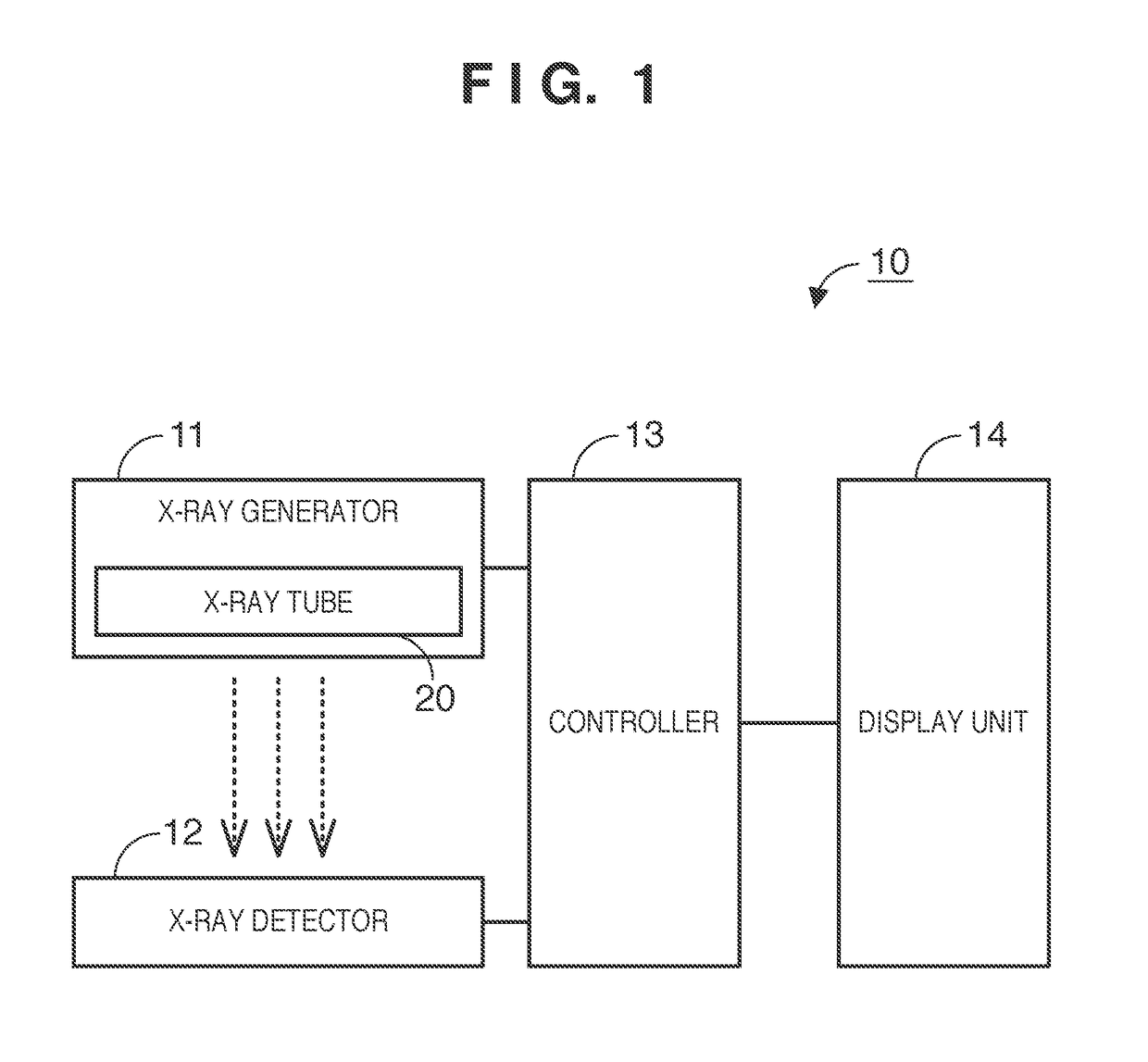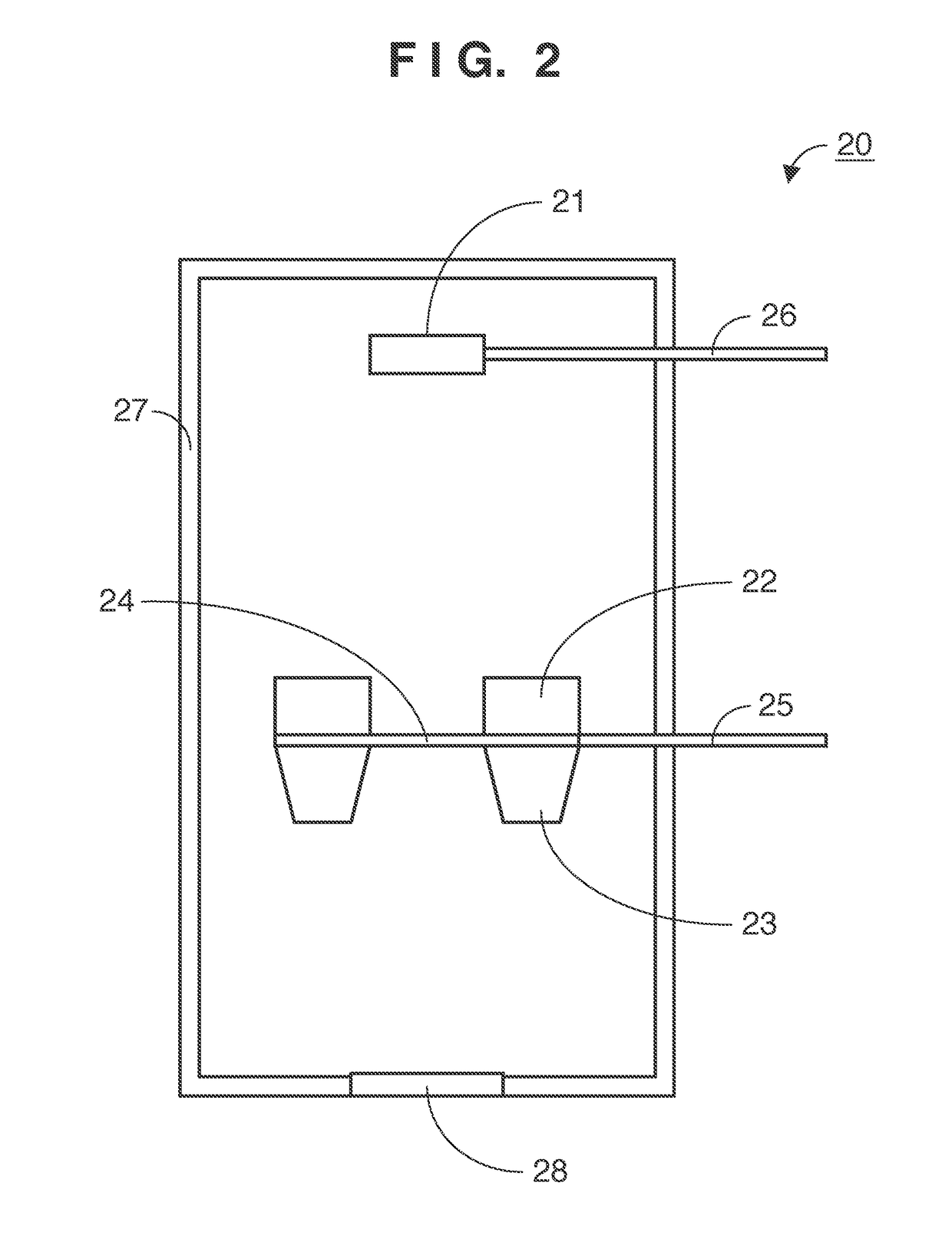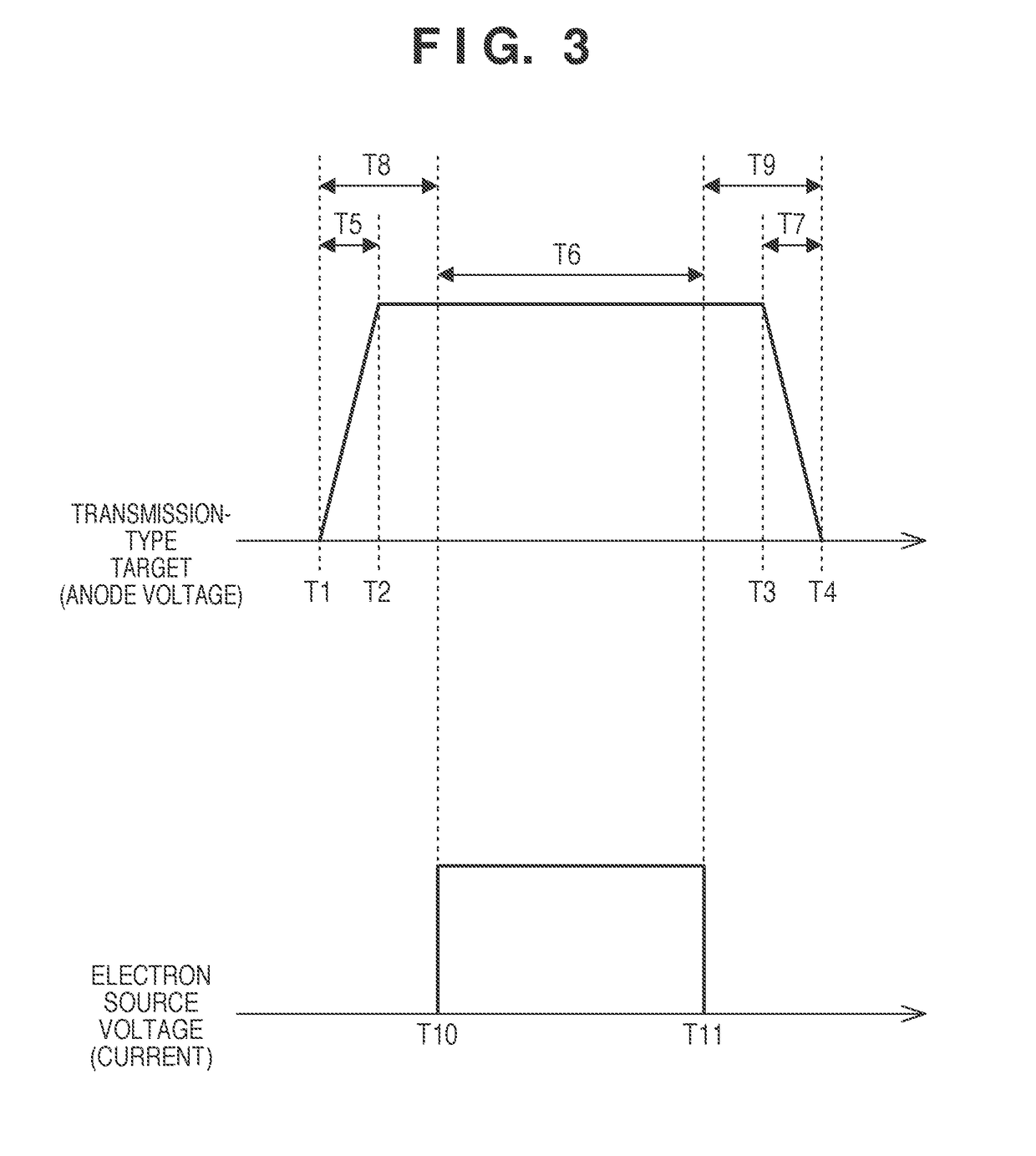X-ray generating apparatus and control method thereof
a technology of generating apparatus and generating beam, which is applied in the direction of electrical apparatus, basic electric elements, electric discharge tubes, etc., can solve the problems of low voltage and unnecessary beam radiation, and achieve the effect of suppressing the generation of unnecessary x-ray
- Summary
- Abstract
- Description
- Claims
- Application Information
AI Technical Summary
Benefits of technology
Problems solved by technology
Method used
Image
Examples
embodiment 1
[0026
[0027]FIG. 1 shows an example of the functional configuration of a radiography apparatus 10 according to one embodiment of the present invention.
[0028]The radiography apparatus 10 is configured including one or a plurality of computers. Provided in the computer are, for example, a main controller such as a CPU, and storage units such as a ROM (Read Only Memory) and a RAM (Random Access Memory). The computer may also be provided with a communications unit such as a network card, and input / output units such as a keyboard, a display, or a touch panel. Each of these constituent units is connected via a bus or the like, and is controlled by the main controller executing a program stored in a storage unit.
[0029]Here, the radiography apparatus 10 is configured including an X-ray generator 11, an X-ray detector 12, a controller 13, and a display unit 14.
[0030]The X-ray generator 11 fulfills a role of irradiating an X-ray toward a subject (for example, a person). An X-ray tube 20 that g...
embodiment 2
[0052
[0053]Next is a description of Embodiment 2. FIG. 4 shows an example configuration of an X-ray tube 20 according to Embodiment 2. Aspects of the configuration that are the same as in FIG. 2 illustrating Embodiment 1 are assigned the same reference numbers, and a description thereof may be omitted here.
[0054]In the X-ray tube 20 according to Embodiment 2, a lens electrode 30 is provided between an electron source 21 and a rear shield member 22. The lens electrode 30 forms an electron beam irradiated from the electron source 21 by operation of a lens. A first voltage that is a voltage that does not cause lens operation, and a second voltage that is a voltage that causes lens operation, are applied to the lens electrode 30. More specifically, the first voltage is a voltage lower than the voltage applied to the electron source 21, and the second voltage is a voltage higher than the voltage applied to the electron source 21.
[0055]Next is a description of an example of control of ope...
embodiment 3
[0062
[0063]Next is a description of Embodiment 3. The configuration of an X-ray tube 20 according to Embodiment 3 is the same as in FIG. 4 illustrating Embodiment 2, so a description thereof is omitted here. Below, points that differ from Embodiment 2 will be described. Among differing points are the time when electrons are emitted by the electron source 21, and the time when a voltage is applied to the lens electrode 30.
[0064]An example of control of operation of the X-ray tube 20 according to Embodiment 3 will be described with reference to FIG. 6.
[0065]The controller 13 applies the second voltage to the lens electrode 30 at the time T12. That is, application of the second voltage to the lens electrode 30 is performed after the transmission-type target 24 has reached the predetermined voltage at the time T2, and prior to emission of electrons from the electron source 21 at the time T10.
[0066]When stopping X-ray generation, the controller 13 stops emission of electrons by the elect...
PUM
 Login to View More
Login to View More Abstract
Description
Claims
Application Information
 Login to View More
Login to View More - R&D
- Intellectual Property
- Life Sciences
- Materials
- Tech Scout
- Unparalleled Data Quality
- Higher Quality Content
- 60% Fewer Hallucinations
Browse by: Latest US Patents, China's latest patents, Technical Efficacy Thesaurus, Application Domain, Technology Topic, Popular Technical Reports.
© 2025 PatSnap. All rights reserved.Legal|Privacy policy|Modern Slavery Act Transparency Statement|Sitemap|About US| Contact US: help@patsnap.com



